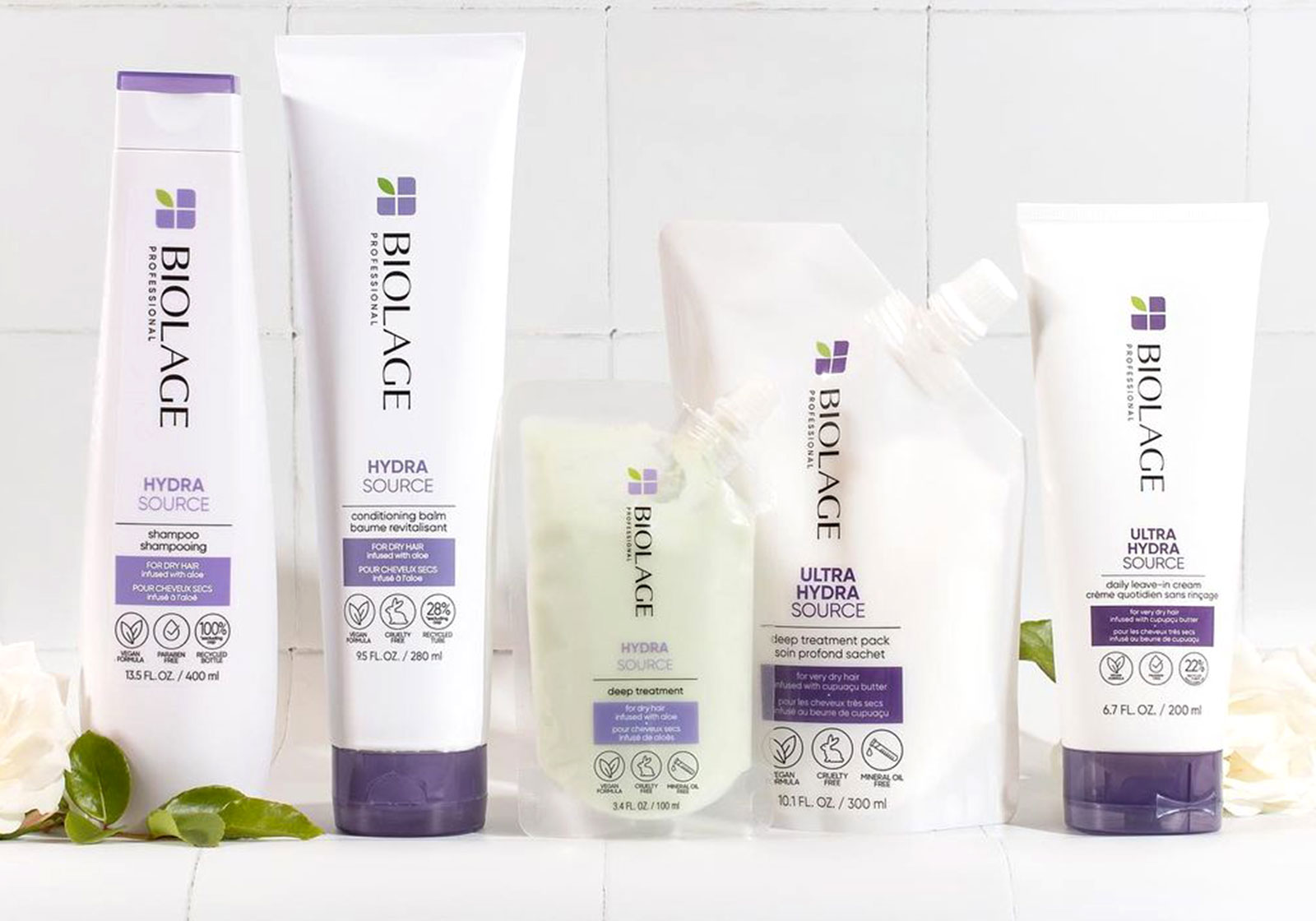Snapping and crackling is exactly what you want to hear when you’re cozied up in front of a fireplace. But when you’re combing or styling your hair? Not so much. Yet that’s exactly what you may be experiencing during cold, windblown, dry-as-a-bone winter months, along with frizz, dullness, flyaways, split ends and overall lackluster locks. Even if your hometown is normally balmy, winter weather can flip the switch and cause unexpected dehydration in your skin and hair. Here are some tips from the pros at Biolage for protecting your hair in winter and keeping it moisturized, soft and manageable.
1—Switch Up Your Shampoo and Conditioner
In winter you swap out sundresses for sweaters. When it comes to your shampoo and conditioner, consider swapping out your regulars for formulas that offer more moisture to combat extreme seasonal dryness. “If my client uses a shampoo and conditioner for normal hair, I recommend switching to a formula for dry hair,” says Biolage Ambassador Rolando Aqui. “And if she is already using products for dry hair, I advise accelerating the moisture even more. My go-tos for dry winter hair are Biolage Ultra Hydra Source Shampoo and Conditioning Balm. The shampoo is very gentle, so it won’t damage the hair as it cleanses. It contains aloe, cupuaçu butter and apricot kernel oil—all very soothing ingredients. And with the conditioning balm, I see a huge improvement in dryness after just one application.”
2—Add a Treatment to Your Routine
Another way to raise your moisturizing game is with a treatment mask. Apply it once or twice a week. This infusion of additional, concentrated conditioning will make your hair care routine that much more extra. The hardest working member of the Biolage Ultra Hydra Source family, for example is the Ultra Hydra Source Deep Treatment Pack. It’s infused with the highest levels of natural emollients and glycerin, plus cupuaçu butter, to drench thirsty hair with moisture and leave it softer and more manageable. “I particularly like to recommend this treatment to clients with thick, coarse and/or highly textured hair,” says Aqui. “They are always astonished at how much better their hair looks and feels after just one application.” Tip: for even more moisturizing muscle, leave your mask on overnight. Simply wrap your hair in a soft cotton t-shirt or silk scarf to prevent tangling and protect your pillowcase and then rinse out the mask in the morning. You’ll love the way your hair feels after an all-night conditioning session!
3—Layer on Moisture
The smart strategy in winter is layering—everyone knows multiple light layers of clothing protect and keep you warm. The same holds true for your hair, so layer up your moisture. Start with moisturizing shampoos and conditioners, followed by regular treatments. Then, select moisturizing leave-ins and styling products to further shield your hair from dehydration. “My styling fave in the winter is Biolage Ultra Hydra Source Leave-In Cream,” says Aqui. “It keeps working for up to 72 hours to maintain moisture levels in the hair and control frizz and flyaways.
4—Shampoo Less Frequently
Your scalp’s natural oils help keep your hair in good condition, but if you shampoo too frequently, you remove those oils before they can get their job done. So try to extend the time between shampoos and give your hair the time and space for self-healing. A quick spritz of a dry shampoo between shampoos will freshen your scalp if need be.
5—Back Off From Too Much Heat Styling
Your blow out may make your hair LOOK silky but too much heat is actually doing you no favors. Thermal damage leads to breakage, split ends and ultra-dry hair if you abuse your tools. Try setting aside your hot tools whenever possible and give your hair a break from the heat. (The good news is, if you’re prone to frizz in humid weather, your hair may behave quite nicely in cold, dry months without excessive heat styling.) And when you do use irons and dryers, keep the temperature dialed down as low as possible and use heat protection products to prevent thermal damage.



